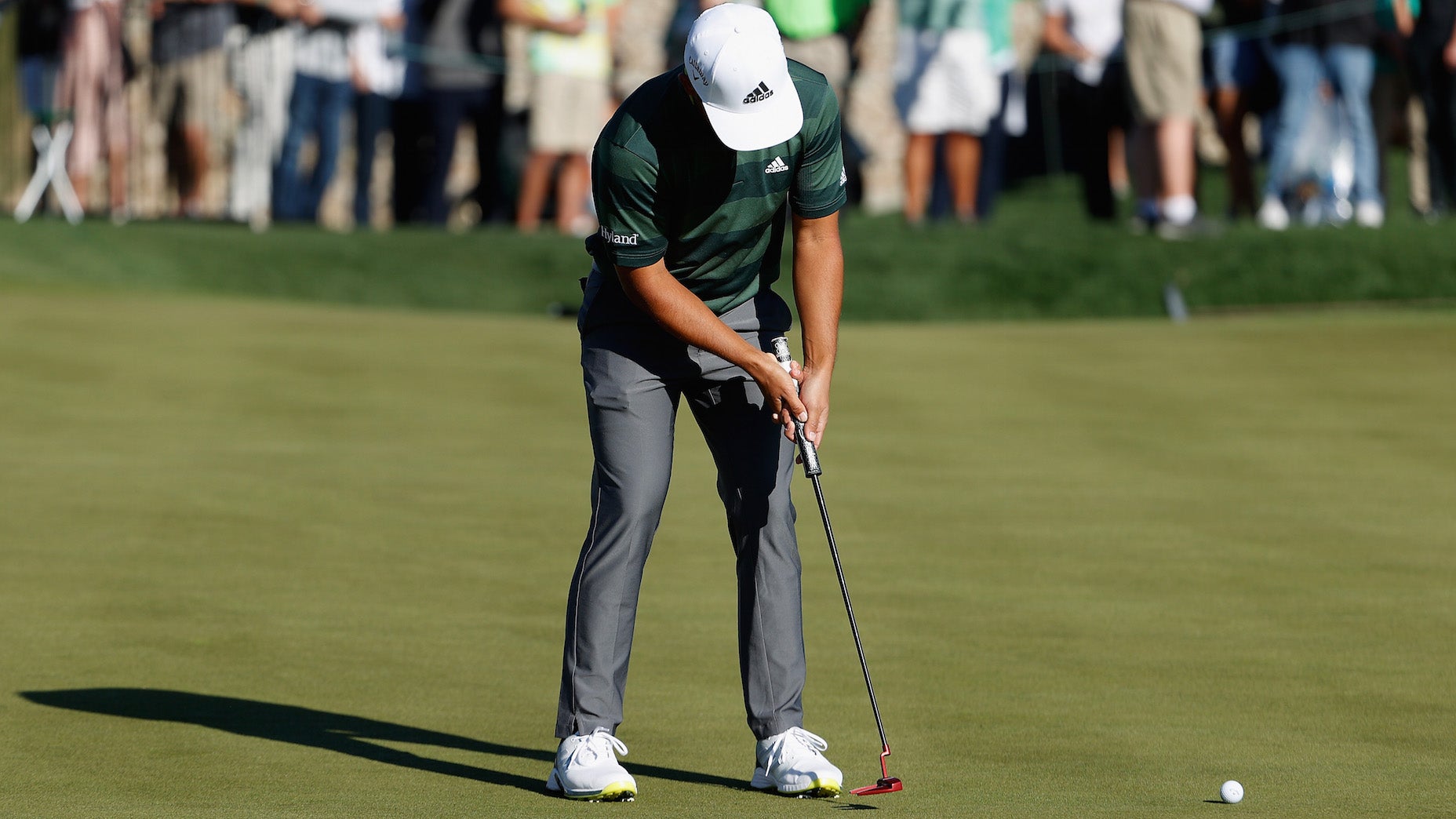Putting can be as free flowing or as scientific as you want to make it. You can take an engineer’s approach like Bryson DeChambeau, a feel-based style of Brad Faxon, or something in between. Regardless, most PGA Tour players all have a few commonalities when it comes to their putting strokes, equipment and preparation. Since most Tour players putt better than most amateurs, they provide a great example we can all learn from.
Lucky for us amateurs, Odyssey Tour rep Joe Toulon, who fits and builds Odyssey putters for PGA Tour players every day, helped shed light on what the game’s best do differently (aside from simply practicing more than amateurs, of course).
On our recent Fully Equipped podcast, Toulon spoke on Jon Rahm’s 2-Ball Ten putter, Steve Stricker’s armlock experiment, Phil Mickelson’s latest prototype, and he also revealed some putting secrets of Tour players, too. It’s Toulon’s job to fit PGA Tour players for Odyssey putters that match their needs, so if anyone knows their putting strokes, it’s him.
Below are three things amateurs can learn from PGA Tour players when it comes to putting, based on our time with Toulon. To listen to the entire interview, click on the Spotify embed directly below, or click here to listen on iTunes.
1. Hit up on the ball
You know those putts you hit where the ball seems to hop right off the putter face? The ball hops up, skids across the green, and eventually rolls out, but by then it’s too late? Both line and speed are off due to the bouncing, so making the putt would basically be an accident.
To help avoid those pitfalls, about “90-95 percent” of PGA Tour players hit up on their putts to impart less backspin, according to Toulon. The other 5-10 percent, as Toulon says, have a level delivery.
“You don’t see any guys hitting down on it, because if you hit down in your stroke, it’s going to pop straight into the ground and you’re at the mercy of whatever that bounce is,” Toulon said.
The secret sauce of the putting stroke for PGA Tour players, as Toulon explains, is a bit of forward shaft lean, too. That means the putter is leaning slightly more toward the target, rather than away from it. The combination of hitting up on the ball and having some degree shaft lean leads to a top-spin shot.
“They all hit up on their putts for the most part, and a lot of them will just slightly have a little forward shaft lean; it’s like a forehand in tennis,” Toulon says. “That’s how you kind of impart the top spin on the ball. You’re hitting up on it, slightly delofting with that shaft in front, and that’s what creates that upward motion on the ball and gets it rolling quicker and sooner.”
2. Match the hosel
The hosel/neck design of a putter matters because it often means the putter will swing a certain way during your stroke. The hosel, combined with the putter’s CG (center of gravity), help determine the toe hang of a putter, which affects how the putter feels and swings.
Tour players spend a lot of time trying to match the hosel to their particular putting stroke. Of course, they have access to custom hosels, but putter companies these days offer a number of different styles at retail.
While the number of options is supremely beneficial to players and fitters, deciding between the different putter designs can be overwhelming. There’s a few general guidelines to match your stroke to the right putter, but Toulon suggests two other ways.
“A fitting would be the most beneficial way to do it, but honestly … trial and error is actually not a bad way,” Toulon says. “You’ll start to get a good feel for what each putter is doing, how you’re swinging, if you’re starting it on line … you start to get a good idea of what works well for you.”
Want to overhaul your bag for 2021? Visit the expert fitters at our sister company, True Spec Golf.
3. Practice alignment, even for just 10 minutes
Putting is complex and ever-changing, so getting it right every single time is impossible, even for the best in the world. But we all have control over setup and alignment. If you want to hit the line you’re targeting, then correct alignment is critical.
Knowing this, Tour players dial in their setup during practice, using feedback from various training aids.
“I always tell players if they’re struggling, if their setup gets off a little bit, a putting mirror is always a great thing to use,” Toulon said. “Start Line Trainer and a putting mirror, and a lot of times you can combine those into one. But just make sure your eyes are in the same position and your ball position hasn’t changed. … Do drills for however long you want to putt for. You can do it in 10 minutes. Make sure you’re calibrated for the day, and you’re good.”
Speed, obviously, is another important aspect that can’t be ignored. While there’s plenty of speed drills that are effective, Toulon sees players taking it old school, too.
“I would say make that a routine, start with [alignment], and then speed drills,” Toulon said. “That’s the other big part of it: speed drills. There’s guys out here who will just putt around with one ball like you did when you were a kid. Which I think is awesome. Just go get that feeling of putting like a kid. After you’ve done all your drills. You’ll get a good feel of speed.”
Interested in more from Toulon? Check the full interview in our latest Fully Equipped podcast below.
